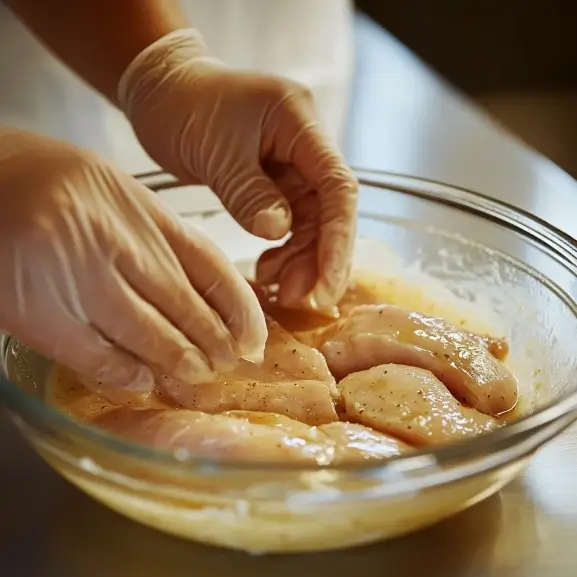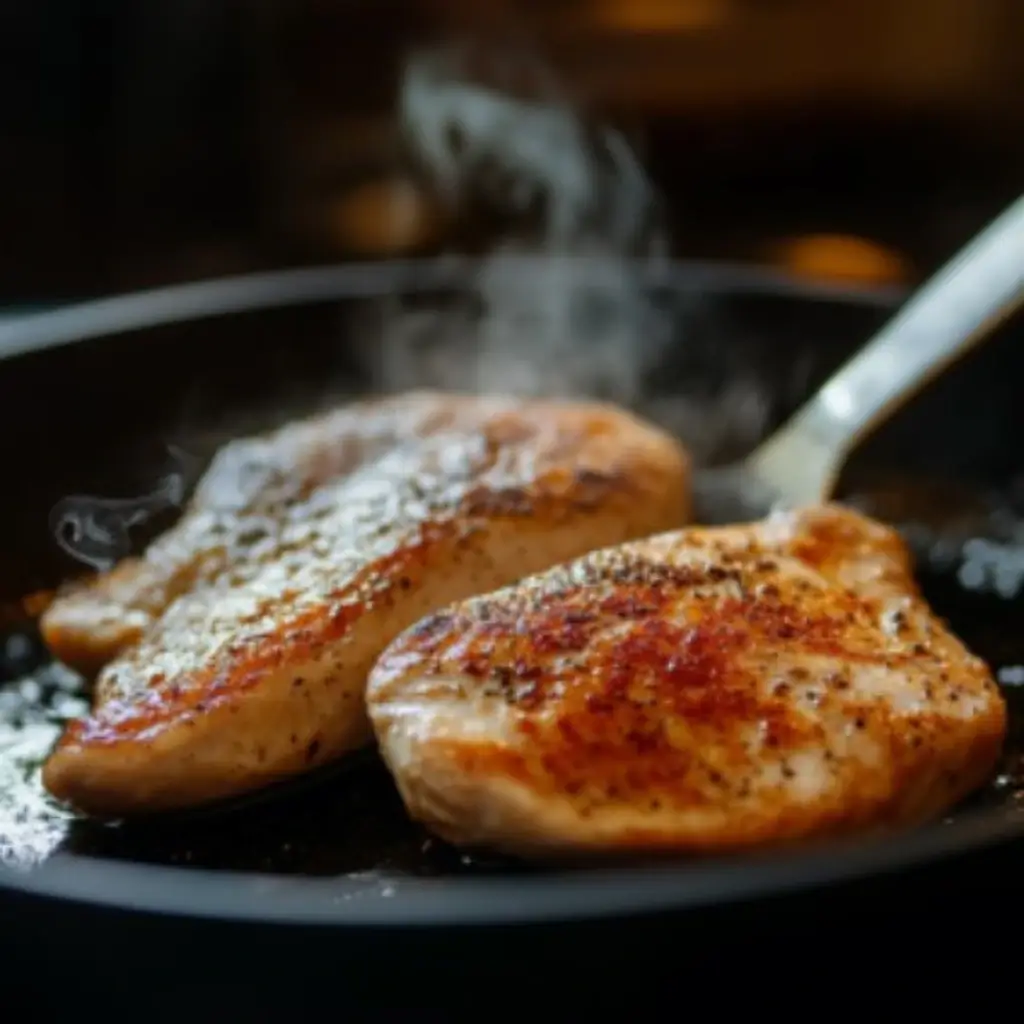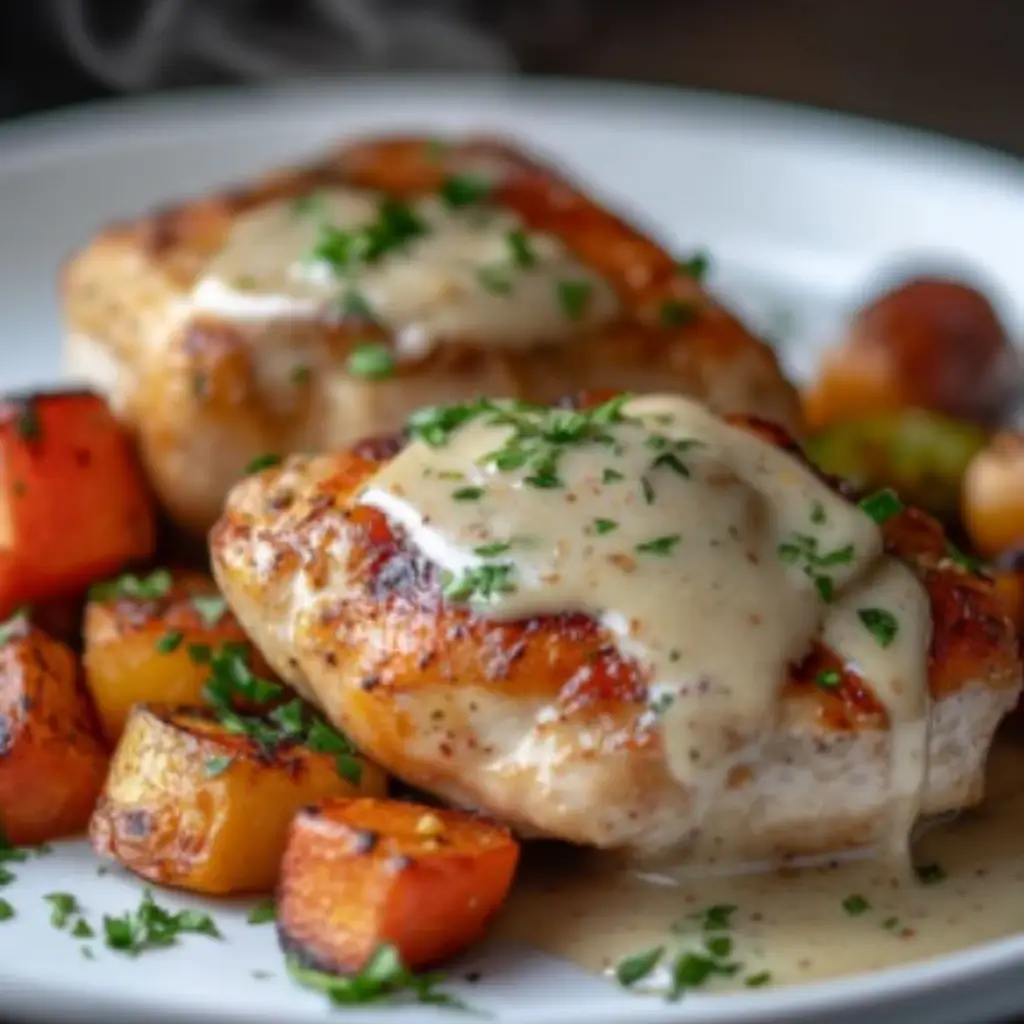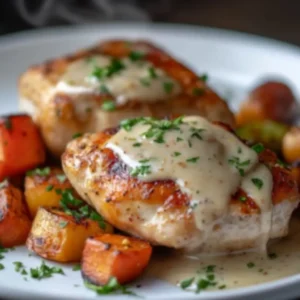Have you ever taken a bite of chicken so tender that it melts in your mouth? That’s exactly what this recipe delivers! This dish is not just a meal; it’s an experience that I cherish. When I first stumbled upon this recipe, I was a novice cook, struggling to make chicken that wasn’t dry or flavorless. The first time I made it, I couldn’t believe I had created something so tender and delicious. It’s the kind of dish that makes you feel like a culinary genius, even if you’ve just started your cooking journey.
Melt In Your Mouth Chicken Breast gets its name from the incredibly tender chicken that just seems to dissolve in your mouth. The secret lies in the marination process and the cooking technique I’ve honed over the years. I want you to feel empowered to create this dish, so I’ll guide you through every step, sharing tips and tricks along the way. By the end of this article, you’ll be equipped with everything you need to make this delightful dish and charm your family and friends!
Table of Contents
Why This Melt in Your Mouth Chicken Recipe is a Must-Try
So, why should you give this Melt In Your Mouth Chicken Breast recipe a try? For starters, it’s so easy! Even if you’re just getting the hang of cooking, this recipe won’t overwhelm you. You only need a handful of basic ingredients and a touch of patience. What I love most about this dish is its unbelievable flavor. The combination of seasonings and the marination process infuses the chicken with such delectable taste that every bite will have you wanting more.
Another aspect that makes this chicken breast worth making is its versatility. I have paired it with an array of sides—from crisp salads to creamy pastas, it complements them all. Plus, it’s a healthier option compared to fried or heavily breaded chicken dishes. Preparing it at home means I control what goes into it, ensuring I’m serving something wholesome.
Cooking this dish has become a fun activity for me; I often make it for family gatherings or cozy dinners at home. The joy of watching my family share in the meal and savor every bite is what brings me back to this recipe time and again. If you’re looking for a dish that stands out but is still achievable, you’ve come to the right place!
Ingredients for the Best Melt in Your Mouth Chicken
Now, let’s gather our ingredients. For the Melt In Your Mouth Chicken Breast, you’ll need:
- 4 boneless, skinless chicken breasts (about 1.5 pounds or 680 grams)
- 1/2 cup (120 ml) buttermilk
- 1/4 cup (60 ml) mayonnaise
- 1 tablespoon Dijon mustard
- 1 teaspoon garlic powder
- 1 teaspoon onion powder
- 1 teaspoon paprika
- 1/2 teaspoon black pepper
- 1/2 teaspoon salt
- 1 tablespoon olive oil (for cooking)
- Fresh parsley (for garnish, optional)
These ingredients create the perfect marinade that not only tenderizes the chicken but adds a burst of flavor. Keep this list handy as we dive into the cooking process!
Step-by-Step Guide to Making Melt in Your Mouth Chicken
Let me take you through the step-by-step process of making this mouthwatering dish.
Prepare the Marinade: In a medium bowl, I combine the buttermilk, mayonnaise, Dijon mustard, garlic powder, onion powder, paprika, black pepper, and salt. I mix it well until all the ingredients are blended smoothly. This marinade is what gives our chicken the tender, melt-in-your-mouth texture.
Marinate the Chicken: I add the chicken breasts to the marinade, making sure they are fully coated. I cover the bowl with plastic wrap and let the chicken marinate in the refrigerator for at least 1 hour. If I have more time, I prefer to marinate it overnight—trust me, the flavor just gets better!

Preheat Your Cookware: When I’m ready to cook, I preheat my skillet over medium-high heat and drizzle in about a tablespoon of olive oil. I love the sizzle it makes when the oil hits the hot pan!
Cook the Chicken: After marinating, I remove the chicken from the fridge, letting the excess marinade drip off. I carefully place the chicken in the hot skillet, making sure not to overcrowd the pan. I cook the chicken for about 6-7 minutes on one side until it’s golden brown and releases easily from the pan.
Flip and Finish Cooking: I then flip the chicken breasts and reduce the heat to medium-low. I cover the skillet with a lid and continue cooking for another 5-7 minutes, or until the chicken reaches an internal temperature of 165°F (74°C). This ensures the chicken is fully cooked and safe to eat. According to the USDA Safe Minimum Internal Temperature Chart, poultry should always be cooked to at least 165°F (74°C) to prevent foodborne illnesses.

Rest the Chicken: Once done, I transfer the chicken to a plate and let it rest for a few minutes. Resting allows the juices to redistribute, making the chicken even more tender.
Garnish and Serve: Finally, I sprinkle some fresh parsley on top for a pop of color and serve!
The aroma that fills my kitchen during this process is simply divine; I often can’t wait to take the first bite!
What’s the Best Way to Serve Melt in Your Mouth Chicken
Once I’ve cooked the chicken, serving it is one of my favorite parts. I like to slice the chicken breasts and serve them over a bed of fluffy rice or alongside roasted vegetables. This not only makes the meal look more appealing but creates a wonderful balance of flavors. For a nice touch, I sometimes drizzle a light sauce or a squeeze of lemon over the top.
Portion sizes depend on your appetite, but I usually serve one chicken breast per person. If I have guests, I might prepare some sides, like a refreshing salad or creamy mashed potatoes, to round out the meal. I also enjoy adding a bit of lemon zest or fresh herbs to elevate the presentation. It’s amazing how a little garnish can turn a simple dish into something restaurant-worthy!
How to Store and Reheat Melt in Your Mouth Chicken
Leftovers? Not a problem! If I have any chicken left after a meal, here’s how I properly store it:
Cooling: First, I allow the chicken to cool down to room temperature.
Refrigerating: I then transfer the chicken to an airtight container and place it in the refrigerator. Typically, it’ll stay fresh for up to 3-4 days.
Freezing: If I want to freeze it, I wrap each chicken breast individually in plastic wrap and then place them in a freezer-safe bag. Frozen chicken can last for about 2-3 months.
Reheating: When I’m ready to enjoy the leftovers, I prefer to reheat the chicken in the oven at 350°F (175°C) for about 15-20 minutes until heated through. It helps retain the chicken’s moisture and flavor.
Expert Tips for the Juiciest Melt in Your Mouth Chicken
As someone who’s made this dish countless times, I’ve picked up a few tips that ensure it turns out perfectly every time:
Marinate for Longer: The longer you can marinate the chicken, the better. Overnight marination yields the most tender results.
Use Meat Thermometer: I highly recommend using a meat thermometer. It takes the guesswork out of cooking and helps avoid overcooking.
Experiment with Flavors: Feel free to switch up the spices based on what you have! Sometimes, I add a pinch of cayenne for a bit of heat or fresh herbs for a burst of freshness.
Use Thinner Cuts: If you’re short on time, you can cut the chicken breasts in half horizontally. This will reduce cooking time, and you’ll still get that delicious flavor.
Delicious Variations of Melt in Your Mouth Chicken
While I love the basic recipe, there are so many ways to give it a fun twist. One of my favorites is to create an herb version. Adding fresh herbs like rosemary or thyme to the marinade will introduce a refreshing aroma and flavor profile. You can also swap out the buttermilk for yogurt for a tangy twist.
Another great option is to use different proteins. I also tried this marinade on beef chops, and it was fantastic! Just be sure to keep an eye on the cooking times, as they can vary.

Mistakes to Avoid When Making This Recipe
I’ve made this dish countless times, and over the years, I’ve learned a few things that can make or break the final result. Here are some typical slip-ups and ways to steer clear of them:
Not marinating long enough – The marinade is what gives the chicken its signature tenderness. While one hour works, overnight marination takes it to the next level. If you’re short on time, at least try for a few hours to let the flavors develop.
Cooking chicken at too high a temperature or for too long can leave it dry and tough. If you’re using thinner chicken breasts, they cook much faster than regular ones. For a detailed guide on perfect cooking times, check out my article on How Long to Bake Thin Chicken Breast to ensure juicy, tender results every time
Skipping the thermometer – One of the biggest mistakes is guessing when the chicken is done. Overcooked chicken turns dry, while undercooked chicken is unsafe to eat. Using a meat thermometer to check for an internal temperature of 165°F (74°C) guarantees perfect results every time.
Crowding the pan – If you try to cook too many pieces of chicken at once, they will steam instead of sear, which can affect the texture. Give each piece some space so they get that beautiful golden-brown crust.
Forgetting to let it rest – Resting the chicken for a few minutes after cooking allows the juices to redistribute, making every bite tender and flavorful. Cutting into it too soon will cause those delicious juices to run out, leaving you with dry chicken.
Making these small adjustments will completely transform the texture and flavor of your dish. Trust me, once you get it right, you’ll never want to cook chicken any other way!
Everything You Need to Know About Melt in Your Mouth Chicken
Can I use frozen chicken breast?
Yes! If your chicken breasts are frozen, I recommend thawing them overnight in the fridge before marinating. This ensures even cooking and allows the marinade to penetrate the meat properly.
What can I serve with Melt In Your Mouth Chicken Breast?
You have many options! I love serving it with roasted vegetables, rice pilaf, or a vibrant salad. Pairing it with garlic mashed potatoes or a creamy pasta can also elevate the meal.
Can I prepare this dish in advance?
Absolutely! You can marinate the chicken the night before and cook it the next day. Just ensure to store it properly in the fridge until you’re ready to cook.
What Do You Think? Let’s Chat!
I’d love to hear from you! Have you tried this Melt in Your Mouth Chicken Recipe yet? If so, tell me all about it in the comments:
- Did you follow the recipe exactly, or did you add your own twist?
- What sides did you pair it with?
- Any tips or variations you’d recommend?
If you enjoyed this recipe, don’t forget to share it with your friends and family—because nothing brings people together like a delicious home-cooked meal.
Can’t wait to read your thoughts!

Melt In Your Mouth Chicken Recipe – The Best You’ll Try!
Ingredients
- boneless skinless chicken breasts (about 1.5 pounds or 680 grams)
- 1/2 cup 120 ml buttermilk
- 1/4 cup 60 ml mayonnaise
- 1 tablespoon Dijon mustard
- 1 teaspoon garlic powder
- 1 teaspoon onion powder
- 1 teaspoon paprika
- 1/2 teaspoon black pepper
- 1/2 teaspoon salt
- 1 tablespoon olive oil for cooking
- Fresh parsley for garnish, optional
Instructions
- Prepare the Marinade: In a medium bowl, I combine the buttermilk, mayonnaise, Dijon mustard, garlic powder, onion powder, paprika, black pepper, and salt. I mix it well until all the ingredients are blended smoothly. This marinade is what gives our chicken the tender, melt-in-your-mouth texture.
- Marinate the Chicken: I add the chicken breasts to the marinade, making sure they are fully coated. I cover the bowl with plastic wrap and let the chicken marinate in the refrigerator for at least 1 hour. If I have more time, I prefer to marinate it overnight—trust me, the flavor just gets better!
- Preheat Your Cookware: When I’m ready to cook, I preheat my skillet over medium-high heat and drizzle in about a tablespoon of olive oil. I love the sizzle it makes when the oil hits the hot pan!
- Cook the Chicken: After marinating, I remove the chicken from the fridge, letting the excess marinade drip off. I carefully place the chicken in the hot skillet, making sure not to overcrowd the pan. I cook the chicken for about 6-7 minutes on one side until it’s golden brown and releases easily from the pan.
- Flip and Finish Cooking: I then flip the chicken breasts and reduce the heat to medium-low. I cover the skillet with a lid and continue cooking for another 5-7 minutes, or until the chicken reaches an internal temperature of 165°F (74°C).
- Rest the Chicken: Once done, I transfer the chicken to a plate and let it rest for a few minutes. Resting allows the juices to redistribute, making the chicken even more tender.
- Garnish and Serve: Finally, I sprinkle some fresh parsley on top for a pop of color and serve!
Notes
- Calories: ~280 kcal
- Protein: ~32g
- Fat: ~12g
- Carbohydrates: ~3g

